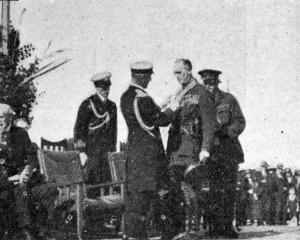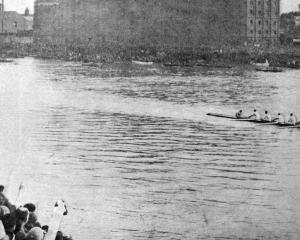
The response throughout the city was very general, and practically every church arranged for special services. The Mayor (Mr J. J. Clark) arranged for a united intercessory service in the Octagon Hall during the afternoon, and this was well attended. Mr Clark presided and Mr W. Paget Gale was musical director and organist. The Mayor, in his opening remarks, briefly explained the object of the service. It was the earnest prayer of all that success would attend the arms of the Allies. In this result the people of New Zealand had absolute confidence. The Rev. W. F. Evans (minister of St Stephen’s Presbyterian Church) then read a portion of Scripture, choosing the 130th Psalm. The Rev. R. E. Evans (minister of North-East Valley Presbyterian Church) gave an address from the text, ‘‘The Lord is in His Holy Temple, let all the earth keep silence before Him’’, which was taken from the 2nd chapter of Habakkuk. The speaker emphasised the sovereignty of God — the God who marked the fall of the sparrow. He it was to whom we could appeal in the time of trial. We should not necessarily have an occasional day of prayer, but we should have a constant flow of prayer, and more especially at present, when the nation was passing through such a time of trial.
Patriotism and cricket
The annual meeting of the Otago Cricket Association was held in Mr E. S. Wilson’s board room on Saturday evening, and was attended by some 26 delegates and members of clubs. The president (Mr J. J. Clark) occupied the chair. In moving the adoption of the report and balance sheet, the chairman said one feature calling for special mention was the magnificent response made by Otago cricketers to the call of the Empire. If anything was required to impress upon the people of the province the patriotism of our young men it was clearly exemplified in the magnificent response of those who played our games when the call came for men to defend the Empire. Those left behind realised that these young men were doing a splendid work on the far-flung battle line. It was well known that the spirit which they had shown on the cricket field was being carried out on the battlefield, and it was also well known that these same men had earned very high recognition in the face of the enemy. He ventured to assert that there would be a great revival in true sport when peace was restored. He asserted that it was a national duty to endeavour to help on a game, for it had been proved that the cricket field was one of the best schools for making good men. He was sure that those present wished their absent comrades the best of luck. He mentioned that there was an Expeditionary Force cricket team abroad, seven of which were Dunedin boys, and a Dunedin boy was captain of the team; and what was equally pleasing was that there were several of Crawford’s colts in the team. The speaker said it could not but be realised that owing to the war all the clubs had experienced great difficulty in carrying on. Notwithstanding this, however, many good matches were played during the last season. A sportsmanlike spirit prevailed, which had made every one connected with it proud of the grand old game. They were deeply indebted to many of the old members for coming out again.
Fossils from Totara quarry
Many objects of interest are unearthed at Miss McDonald’s quarry at Totara. (Sharks’ teeth bedded in the lime are frequently found in many parts of North Otago, and these are plentiful enough in this quarry. But occasionally appears something of more than ordinary interest. There was a live frog, for instance, firmly bedded a dozen feet within solid limestone. Sluggish for a while, it revived and showed such signs of life as to warrant its imprisonment for observation. How many thousand years it had lain dormant in the rock cannot be guessed by the layman, but it was alive when placed in durance at 10 a.m., and livelier still when visited again at 3 p.m. When next its place of confinement was visited it had disappeared. The probabilities are otherwise, for a frog found similarly in marble in Italy found the change in circumstances too much for one of its confined habits. — ODT, 8.10.1917
• COPIES OF PICTURE AVAILABLE FROM ODT FRONT OFFICE, LOWER STUART ST, OR WWW.OTAGOIMAGES.CO.NZ












